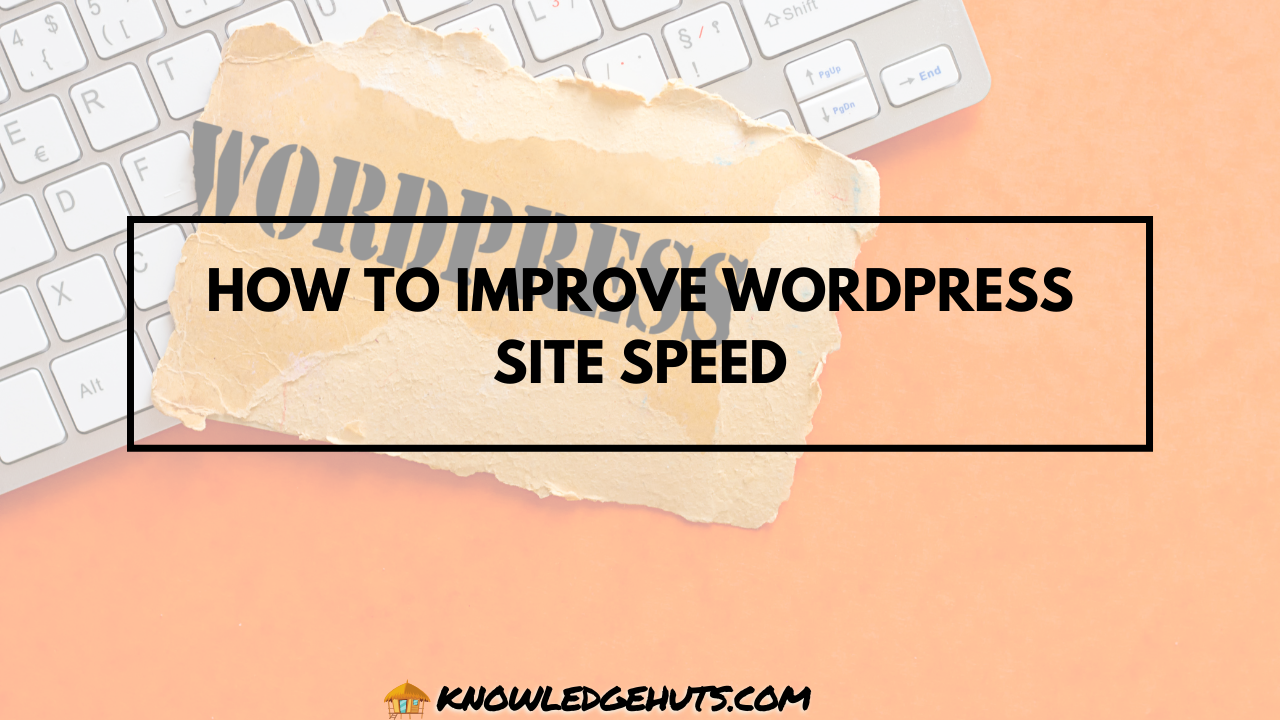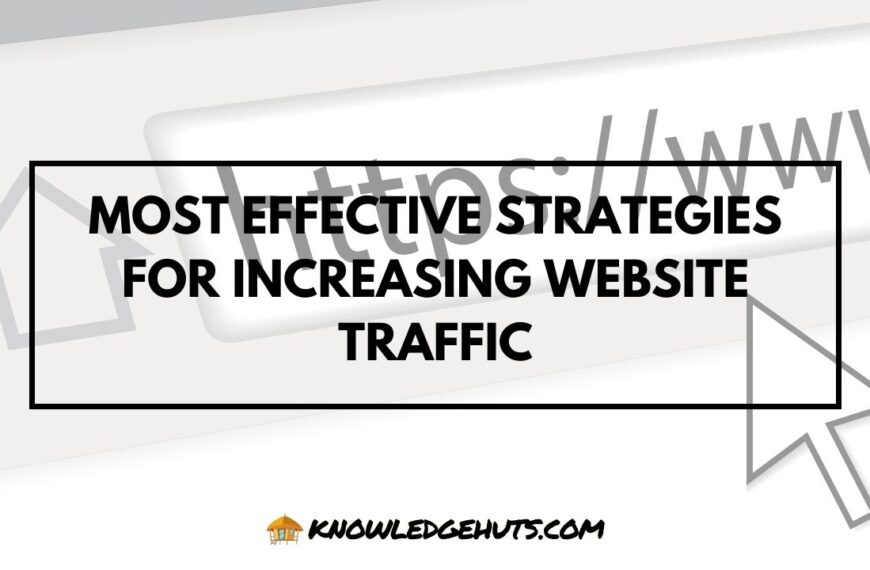Site speed is a crucial factor in determining the success of any website. With users expecting fast load times and search engines prioritizing speed in their ranking algorithms, ensuring your WordPress site is optimized for speed is essential. A slow website can lead to higher bounce rates, lower user engagement, and reduced conversions. In this post, we’ll explore actionable strategies to improve WordPress site speed and create a faster, more efficient website for your visitors.
Why WordPress Site Speed Matters
- Improved User Experience: A fast website provides a better experience for users, encouraging them to stay longer and engage more with your content. According to research, 53% of mobile users abandon a site if it takes more than three seconds to load.
- Higher Search Engine Rankings: Site speed is a confirmed ranking factor in Google’s search algorithm. Faster websites are more likely to rank higher in search results, leading to more organic traffic.
- Increased Conversions: Faster loading times correlate with higher conversion rates. Studies have shown that a 1-second delay in page load time can reduce conversions by up to 7%.
- Reduced Bounce Rates: Users are more likely to leave your site if it takes too long to load. By improving your WordPress site’s speed, you can keep users on your site for longer and reduce bounce rates.
Quote: “Speed is one of the critical factors in web performance. The faster a website loads, the better it will perform in search engine rankings, user retention, and overall conversions.” — John Smith, Web Performance Specialist
How to Measure Your WordPress Site Speed
Before making any changes, it’s essential to measure your current site speed. There are several tools available to test your WordPress site’s speed and identify areas for improvement.
Popular Tools to Measure Site Speed:
- Google PageSpeed Insights: This free tool from Google analyzes your site’s performance on both mobile and desktop devices. It provides a score between 0 and 100, with recommendations for improving load times.
- GTmetrix: GTmetrix gives you detailed insights into your site’s speed and performance. It offers waterfall charts, speed scores, and recommendations for optimization.
- Pingdom Website Speed Test: Pingdom allows you to test your site’s speed from different locations worldwide. It provides detailed performance insights and a breakdown of load times for individual elements.
- WebPageTest: WebPageTest offers advanced site speed testing with various settings, including multiple test locations, device types, and connection speeds.
Example Table: Site Speed Testing Tools
| Tool Name | Features | Ideal For |
|---|---|---|
| Google PageSpeed Insights | Mobile and desktop performance analysis | Quick performance overview and recommendations |
| GTmetrix | Waterfall charts, speed scores, detailed reports | In-depth analysis of load times and bottlenecks |
| Pingdom | Location-based speed testing | Testing global site performance |
| WebPageTest | Advanced testing options | Testing under different conditions |
Factors Affecting WordPress Site Speed
There are several factors that can slow down your WordPress site. Identifying and addressing these can help improve load times and overall site performance.
1. Web Hosting
Your hosting provider plays a critical role in site speed. Shared hosting, for instance, can slow down your site due to limited resources, especially during high-traffic periods.
2. Large Image Files
Images are one of the leading causes of slow load times. Large image files increase the time it takes for your pages to load, especially on mobile devices or slower connections.
3. Too Many Plugins
While plugins add functionality to your WordPress site, having too many, or poorly coded plugins, can lead to slower load times. Each plugin adds additional code and requests, which can bog down your website.
4. Unoptimized CSS and JavaScript
CSS and JavaScript files are essential for your site’s appearance and functionality. However, unoptimized or bloated CSS and JavaScript files can cause delays in rendering, making your site load slower.
5. Lack of Caching
Caching helps store static versions of your site, reducing the amount of data that needs to be loaded for returning visitors. Without proper caching, your server has to process each request from scratch, slowing down load times.
Example Table: Common Factors Affecting WordPress Site Speed
| Factor | Description | Impact on Site Speed |
|---|---|---|
| Web Hosting | Hosting provider’s resources and server performance | Can cause slowdowns during high-traffic periods |
| Large Image Files | Uncompressed or large image files | Increases page load times, especially on mobile |
| Too Many Plugins | Excessive use of WordPress plugins | Slows down site due to additional code requests |
| Unoptimized CSS and JavaScript | Bloated or unminified CSS/JavaScript files | Delays page rendering and increases load times |
| Lack of Caching | Not using caching mechanisms | Requires the server to load everything from scratch |
How to Improve WordPress Site Speed
Now that we’ve identified the key factors that affect site speed, let’s explore practical ways to optimize and improve your WordPress site performance.
1. Choose a Reliable Hosting Provider
Choosing the right web hosting service is the foundation of a fast WordPress site. especially when working with top WordPress development companies to ensure optimal performance.
Hosting Solutions for Better Speed:
- Managed WordPress Hosting: Managed hosting services offer optimized environments specifically for WordPress. Providers like WP Engine, Kinsta, and SiteGround ensure better speed and security for your site especially when working with top WordPress development companies to ensure optimal performance.
- VPS (Virtual Private Server) Hosting: VPS hosting provides dedicated resources, ensuring that your site isn’t affected by other sites on the server.
- Cloud Hosting: Cloud hosting services like Amazon Web Services (AWS) and Google Cloud offer scalable solutions, which are ideal for handling high-traffic sites.
Quote: “Investing in quality hosting is the first step in improving your site’s speed. A slow server can undermine all your other optimization efforts.” — Sarah Lewis, Hosting Expert
Example Table: Hosting Solutions for WordPress Sites
| Hosting Type | Features | Best For |
|---|---|---|
| Managed WordPress Hosting | Optimized for WordPress, high speed, security | WordPress-specific sites, small to medium businesses |
| VPS Hosting | Dedicated resources, better control | Medium to large sites with growing traffic |
| Cloud Hosting | Scalable, pay-as-you-go model | High-traffic sites needing flexible resources |
2. Optimize Images
Images significantly impact load times, especially when they aren’t optimized. By compressing and resizing your images, you can improve site speed without sacrificing quality.
Best Practices for Image Optimization:
- Use Proper File Formats: For photographs, use JPEG files, and for graphics or logos, use PNG. Consider using next-gen formats like WebP, which offer better compression rates.
- Resize Images: Ensure that your images are scaled appropriately for their use on the site. Large images intended for small spaces (e.g., thumbnails) slow down the site.
- Compress Images: Use plugins like Smush or ShortPixel to automatically compress images and reduce their file size without losing quality.
Example Table: Tools for Image Optimization
| Tool Name | Features | Benefits to Site Speed |
|---|---|---|
| Smush | Compresses images without losing quality | Reduces image size, improves load times |
| ShortPixel | Compresses and converts images to WebP format | Faster load times, better image quality |
| EWWW Image Optimizer | Compresses images in real-time | Optimizes existing and new images |
3. Use a Content Delivery Network (CDN)
A Content Delivery Network (CDN) is a network of servers located around the globe that store and deliver your website’s content to users from the server closest to their geographical location. This reduces the physical distance between the server and the user, resulting in faster load times, especially for users accessing your site from different regions.
Benefits of Using a CDN:
- Reduced Latency: By delivering content from servers closer to the user, CDNs help reduce latency, improving overall load times.
- Improved Reliability: CDNs distribute traffic across multiple servers, reducing the likelihood of downtime due to server overload.
- Global Reach: With a CDN, users across the world can experience faster load times, ensuring a consistent user experience regardless of location.
Popular CDN Providers for WordPress:
- Cloudflare: One of the most popular CDN providers, offering both free and premium plans.
- MaxCDN: Offers easy integration with WordPress and provides high-speed delivery of assets.
- KeyCDN: A cost-effective option for small to medium websites looking to improve speed.
Example Table: Comparison of Popular CDN Providers for WordPress
| CDN Provider | Features | Price Range |
|---|---|---|
| Cloudflare | Free plan, DDoS protection, global coverage | Free to premium plans |
| MaxCDN (now StackPath) | Fast loading, easy integration, advanced analytics | Starts at $10/month |
| KeyCDN | Real-time reports, pay-as-you-go pricing model | Based on usage, affordable for small websites |
Quote: “Using a CDN is one of the easiest ways to boost website speed. It ensures your content reaches users faster, no matter where they are in the world.” — Sarah Thompson, Web Performance Expert
4. Optimize Images
Images are often one of the biggest contributors to slow website load times. Large image files can significantly increase the time it takes for a page to load. Optimizing your images without sacrificing quality is a critical step in speeding up your WordPress site.
Best Practices for Image Optimization:
- Use the Right File Format: For images with fewer colors or simple graphics (such as logos), use PNG format. For photos and complex images, use JPEG format, which offers better compression.
- Compress Images: Use image compression tools to reduce the file size of images without compromising quality. Plugins like Smush and Imagify automatically compress images as they are uploaded to WordPress.
- Lazy Load Images: Lazy loading ensures that images are only loaded when they are visible on the user’s screen, improving initial load times. WordPress has built-in lazy loading functionality, but you can also use plugins like Lazy Load by WP Rocket for better control.
Example Table: Popular Image Optimization Plugins for WordPress
| Plugin | Features | Free/Paid |
|---|---|---|
| Smush | Compresses images, lazy loading, bulk compression | Free with premium version available |
| Imagify | Automatic image compression, WebP support | Free with premium plans |
| ShortPixel | Compresses images, supports WebP and PNG formats | Free with paid options based on image count |
5. Choose a Lightweight Theme
Your WordPress theme plays a significant role in determining your website’s speed. A theme that is overloaded with features, scripts, and large files can drastically slow down your site. Opting for a lightweight and speed-optimized theme can greatly improve load times.
What to Look for in a Lightweight Theme:
- Minimal Code: Themes with clean, minimal code are faster to load because they avoid unnecessary scripts and CSS.
- Mobile Optimization: Since mobile traffic continues to grow, it’s essential that your theme is responsive and optimized for mobile devices.
- Compatibility with Caching Plugins: A well-built theme should be compatible with popular caching plugins like WP Rocket or W3 Total Cache.
Recommended Lightweight Themes for WordPress:
- Astra: Known for its lightweight design and high-speed performance, Astra is one of the most popular WordPress themes.
- GeneratePress: A minimalist theme designed for speed and flexibility.
- Neve: A super-fast, mobile-first theme ideal for small businesses and blogs.
Example Table: Comparison of Lightweight WordPress Themes
| Theme | Features | Page Load Time Improvement |
|---|---|---|
| Astra | Lightweight, customizable, SEO-friendly | Significant improvement in load times |
| GeneratePress | Minimalist, optimized for performance | Highly recommended for speed |
| Neve | Fast, mobile-first, AMP compatible | Great for mobile optimization |
6. Minify CSS, JavaScript, and HTML
Minifying your CSS, JavaScript, and HTML files involves removing unnecessary characters such as spaces, line breaks, and comments from your code. This reduces the size of the files, allowing them to load faster. Minification is especially important for sites with custom themes or those that rely on multiple plugins, as these can increase the amount of code being loaded.
How to Minify Files:
- Use a Plugin: There are several WordPress plugins that can automatically minify your CSS, JavaScript, and HTML files. Popular options include Autoptimize, WP Rocket, and W3 Total Cache.
- Combine Files: In addition to minification, some plugins also allow you to combine multiple CSS and JavaScript files into a single file, reducing the number of HTTP requests and improving site speed.
Example Table: Popular Minification Plugins for WordPress
| Plugin | Features | Free/Paid |
|---|---|---|
| Autoptimize | Minifies and combines CSS, JavaScript, and HTML | Free |
| WP Rocket | Minification, caching, lazy loading | Paid |
| W3 Total Cache | Minifies CSS, JavaScript, HTML, caching support | Free |
7. Implement Caching
Caching is one of the most effective ways to speed up your WordPress site. Caching stores a static version of your website in the user’s browser, so when they visit your site again, it loads much faster since it doesn’t need to reload all the resources from the server.
Types of Caching:
- Browser Caching: Stores static resources (like images, CSS, and JavaScript) on the visitor’s computer so they don’t need to be downloaded again when they revisit the site.
- Server-Side Caching: Caches website data on the server, reducing the time it takes to serve content to users.
- Page Caching: Generates a static HTML page and saves it, which speeds up future requests for the same page.
Recommended Caching Plugins for WordPress:
- WP Rocket: A premium caching plugin that offers a comprehensive range of features, including file minification, lazy loading, and CDN integration.
- W3 Total Cache: A free plugin with advanced caching options, including page and object caching, minification, and support for CDNs.
- LiteSpeed Cache: Works with LiteSpeed servers, providing caching and other speed optimization features.
Example Table: Comparison of WordPress Caching Plugins
| Plugin | Features | Free/Paid |
|---|---|---|
| WP Rocket | All-in-one caching solution, file optimization | Paid |
| W3 Total Cache | Advanced caching options, CDN integration | Free |
| LiteSpeed Cache | Caching, lazy loading, image optimization | Free |
8. Enable GZIP Compression
GZIP compression reduces the size of your website’s files before they are sent to the user’s browser. By compressing files such as CSS, JavaScript, and HTML, you can significantly reduce the amount of data that needs to be downloaded, improving load times.
How to Enable GZIP Compression:
- Use a Plugin: Many WordPress caching plugins, such as WP Rocket and W3 Total Cache, include built-in support for GZIP compression. You can enable it with a few clicks.
- Edit .htaccess File: For those comfortable with editing code, you can manually enable GZIP compression by adding specific code to your site’s
.htaccessfile.
9. Reduce HTTP Requests
Every time a user loads a page on your site, their browser sends multiple requests to the server for resources such as CSS files, JavaScript files, and images. Reducing the number of these HTTP requests can dramatically improve site speed.
Ways to Reduce HTTP Requests:
- Combine Files: Merge multiple CSS and JavaScript files into a single file to reduce the number of requests.
- Remove Unnecessary Plugins: Disable and delete any plugins that are not critical to your site’s functionality. Each plugin may add additional scripts and styles, increasing HTTP requests.
- Use Inline CSS: For small CSS snippets, consider using inline CSS instead of linking to an external file.
10. Use a Faster Hosting Provider
Your hosting provider plays a key role in determining your WordPress site’s speed. A slow, shared hosting server can bottleneck your website, leading to slower load times even if you’ve optimized other factors. Choosing a reliable hosting provider with fast servers and solid infrastructure is essential for maintaining high site speed.
10. Use a Faster Hosting Provider
Your hosting provider plays a critical role in your website’s speed and overall performance. A slow or overloaded hosting server can drastically slow down your WordPress site, regardless of how much you’ve optimized other aspects. Upgrading to a better hosting solution can significantly improve site speed, especially if you’re experiencing high traffic or using a resource-intensive theme or plugins.
Types of Hosting for Faster WordPress Sites:
- Shared Hosting: This is the most affordable option but can result in slower speeds since resources are shared with other websites on the same server. Shared hosting is suitable for small sites with low traffic.
- VPS Hosting (Virtual Private Server): This offers more resources and flexibility than shared hosting. It provides faster performance by partitioning the server so that your site has its own dedicated resources.
- Managed WordPress Hosting: Specifically optimized for WordPress, this hosting solution handles server configuration, security updates, and backups for you, ensuring that your site runs smoothly and efficiently.
- Dedicated Hosting: In this option, you get a dedicated server entirely for your site. It’s expensive but offers top-tier performance, making it ideal for large websites or e-commerce stores with high traffic.
- Cloud Hosting: This type of hosting uses multiple servers to balance load and maximize uptime. It provides great scalability and performance, making it ideal for growing websites.
Recommended Hosting Providers for WordPress:
- SiteGround: Known for its speed, security, and excellent customer support, SiteGround offers shared, cloud, and managed WordPress hosting plans.
- Bluehost: A popular option for WordPress users, Bluehost offers affordable and reliable hosting, with various options like shared, VPS, and managed hosting.
- Kinsta: A premium managed WordPress hosting provider that focuses on performance and security, offering a high level of service and speed optimization.
Example Table: Comparison of WordPress Hosting Providers
| Hosting Provider | Features | Price Range |
|---|---|---|
| SiteGround | Fast speeds, excellent customer support, free CDN | $4.99/month for shared hosting |
| Bluehost | Affordable, WordPress-optimized plans, free SSL | $2.95/month for shared hosting |
| Kinsta | Managed WordPress hosting, premium support | Starts at $35/month for managed hosting |
Quote: “A good hosting provider is the backbone of a fast website. Even the best optimization efforts can fall short if you’re using slow, outdated hosting.” — Mark Stevens, Web Hosting Expert
11. Limit WordPress Plugins
While plugins are essential for adding functionality to your WordPress site, using too many or poorly optimized plugins can slow down your website. Each plugin may load additional CSS, JavaScript, and database queries, which increases load times and the number of HTTP requests.
Tips for Managing Plugins:
- Use Only Necessary Plugins: Remove any unnecessary plugins that aren’t critical to your website’s functionality.
- Avoid Redundant Plugins: Don’t use multiple plugins that serve the same purpose. For instance, choose one SEO plugin instead of two.
- Choose Lightweight Plugins: Opt for plugins known for their speed and performance. Before installing a new plugin, read reviews to see if it is optimized for speed.
- Monitor Plugin Performance: Use tools like Query Monitor to assess the performance impact of each plugin on your website. If a plugin is slowing down your site, look for alternatives.
Example Table: Plugin Performance Impact on WordPress Sites
| Plugin Type | Performance Impact | Recommendations |
|---|---|---|
| Security Plugins | Can add additional layers of security, but too many can slow down your site | Choose lightweight plugins like Wordfence or iThemes |
| Caching Plugins | Improve performance by caching pages and resources | WP Rocket, W3 Total Cache |
| SEO Plugins | Can impact site speed due to increased database queries | Yoast SEO, Rank Math |
| Backup Plugins | Some can affect server performance during backups | Use scheduled backups with UpdraftPlus |
12. Optimize Your WordPress Database
Over time, your WordPress database can become bloated with unnecessary data such as post revisions, spam comments, transients, and outdated options. This can slow down your website by increasing the time it takes to retrieve information from the database.
Steps to Optimize Your Database:
- Remove Post Revisions: WordPress automatically saves multiple versions of your posts. While useful, they can quickly accumulate. Use a plugin like WP-Optimize to delete unnecessary post revisions.
- Clean Up Spam Comments: Regularly clean up spam or unapproved comments to keep your database lean.
- Delete Unused Data: Remove unused plugins, themes, and other data that take up unnecessary space in your database.
- Optimize Tables: You can use plugins like WP-DBManager or run SQL queries to optimize database tables and improve their performance.
Example Table: WordPress Database Optimization Steps
| Task | Description | Benefits |
|---|---|---|
| Remove Post Revisions | Deletes excess revisions saved in the database | Frees up space, improves query times |
| Clean Up Spam Comments | Deletes spam or unapproved comments | Reduces database load, improves speed |
| Optimize Database Tables | Defrags and optimizes database tables | Improves database performance and query speed |
| Remove Unused Data | Deletes inactive plugins, themes, and transients | Reduces database size, improves loading times |
13. Reduce External Scripts
External scripts such as Google Fonts, social media embeds, and third-party analytics tools can add to your site’s load time. While these scripts are often necessary for functionality, it’s essential to minimize their impact on performance.
How to Manage External Scripts:
- Load Scripts Asynchronously: Asynchronous loading allows external scripts to load without blocking the rest of the content. You can use plugins like Async JavaScript to implement this.
- Limit Third-Party Integrations: Only use essential external scripts, and consider removing or deferring non-critical ones.
- Host Files Locally: Where possible, host resources such as fonts locally instead of relying on external servers, which can reduce load times.
Example Table: Common External Scripts and Their Impact
| Script Type | Impact on Performance | Recommendations |
|---|---|---|
| Google Fonts | Can slow down page load due to external requests | Load locally or reduce the number of font variants used |
| Social Media Embeds | Adds extra HTTP requests and scripts | Limit to essential social sharing buttons |
| Analytics Tools | Can increase load times due to tracking scripts | Load asynchronously or use server-side tracking |
| Third-Party Ads | Increases load times with additional requests | Limit the number of ad networks used |
14. Optimize Your Website for Mobile
With an increasing number of users accessing websites via mobile devices, it’s important to ensure that your WordPress site is developed and optimized for mobile speed and performance. Google’s mobile-first indexing means that your mobile site’s speed directly impacts your search rankings.
Tips for Mobile Optimization:
- Use a Responsive Theme: Ensure your WordPress theme is responsive, meaning it adjusts its layout and content to different screen sizes.
- Optimize Mobile Images: Use smaller image sizes for mobile users, and leverage lazy loading to prevent images from slowing down mobile page loads.
- Enable Accelerated Mobile Pages (AMP): AMP is a Google-backed project that helps web pages load faster on mobile devices by stripping down the code and delivering simplified pages.
Example Table: Mobile Optimization Tips for WordPress Sites
| Optimization Strategy | Description | Impact on Mobile Speed |
|---|---|---|
| Responsive Theme | Adjusts layout for different screen sizes | Improves mobile user experience and speed |
| Mobile Image Optimization | Compress and resize images for mobile screens | Reduces load times on mobile |
| Enable AMP | Strips down unnecessary code for faster mobile pages | Significantly speeds up mobile load times |
15. Use Lazy Loading
Lazy loading is a technique where images and other media files are only loaded when they are about to appear in the user’s viewport. This improves the initial load time by not loading all the images at once, especially on long pages with lots of content.
How to Implement Lazy Loading:
- Use a Plugin: Plugins like Lazy Load by WP Rocket or a3 Lazy Load can easily implement this functionality on your WordPress site. These plugins allow you to configure lazy loading for images, videos, and iframes.
Benefits of Lazy Loading:
- Reduces initial load times by delaying the loading of off-screen images.
- Improves performance on image-heavy pages.
- Enhances user experience by delivering faster page loads, especially on mobile devices.
Conclusion
Improving WordPress site speed is essential for enhancing user experience, boosting search engine rankings, and increasing conversions. By implementing the strategies discussed—such as optimizing images, leveraging caching, using a CDN, and choosing a reliable hosting provider—you can significantly reduce load times and ensure your website performs at its best.
Fast websites not only improve user engagement but also provide a competitive edge in a digital landscape where speed is critical. Regularly monitoring your website’s performance and staying on top of the latest optimization techniques will ensure your WordPress site remains fast and efficient for years to come.








